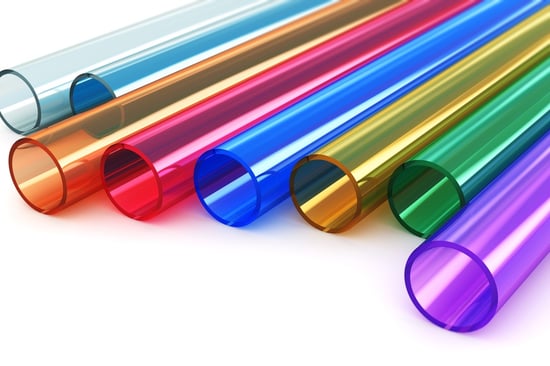Anything made out of plastic used to be considered cheap; however, today, thousands of products are produced from plastics. Some of these products include automobile parts, computer housings, and medical parts. The first synthetic plastic was produced in 1869 from plant material cellulose by John Wesley Hyatt. His synthetic plastic was used in eyeglass frames, combs, billiard balls, shirt collars, dentures, buttons and photographic film.
In 1951, J. Paul Hogan and Robert L. Banks, two research chemists who worked at Phillips Petroleum, made discoveries to revolutionize the plastics world while attempting to convert propylene into gasoline. The plastic they discovered was Polypropylene and Polyethylene. After Hogan and Banks’ discover, Phillips Petroleum entered the plastics world. Today, both polypropylene and polyethylene are used to produce the vast majority of the thousands of plastic products all over the world.
The technological road from oil field to finished plastic product has numerous fascinating side trips. Here is the petroleum-to-plastics process:
-
Petroleum is drilled and transported to a refinery.
-
Crude oil and natural gas are refined into ethane, propane, hundreds of other petrochemical products and fuel for your car.
-
Ethane and propane are “cracked” into ethylene and propylene using high-temperature furnaces.
-
Catalyst is combined with ethylene or propylene in a reactor, resulting in “fluff,” a powdered material called polymer which resembles laundry detergent.
-
Fluff is combined with additives in a continuous blender.
-
Polymer is fed to an extruder where it is melted.
-
Melted plastic is cooled and fed to a pelletizer that cuts the product into small pellets.
-
Pellets are shipped to customers.

Today, there are “new” plastics known as polylactic acid, or PLA. One of the main sources of polylactic acid is corn and is “green” material. Production of PLA begins with starch from renewable resources; unrefined dextrose is processed from starch. The dextrose is fermented into lactic acid and lactide is then produced through condensation. Next, purification happens through vacuum distillation. Lastly, solvent-free melt polymerization.
One trademarked brand of PLA biopolymers is Ingeo. Ingeo is owned by NatureWorks and can be found in packaging products in all areas of the grocery store:
-
frozen department
-
dry grocery department
-
deli department
-
meat department
-
eggs and dairy department
-
cheese and yogurt department
-
bakery department
-
floral department
-
produce department
-
checkout
Ingeo PLA can also be found in servicewear, bottles, rigid containers, nonwovens, consumer goods, home and office textile, flexible films and coatings, and apparel.
Facts for “unmaking” polylactic acid:
-
It is fully combustible in composting facilities and can be converted back to monomer.
-
It can be completed broken down to H20, CO2, and organics.
-
The degradation time can take anywhere from weeks to months.
With one bushel of corn, or 56 pounds, you can get:
-
1.6 pounds of corn oil -
-
cooking oil, margarine, salad dressing, shortening, soups, printing ink, soap
-
13.5 pounds of gluten feed -
-
21% protein, livestock and poultry feed, pet food
-
2.6 pounds of gluten meal -
-
60% protein, amino acids, fur cleaner
-
32 pounds of starch -
-
adhesives, batteries, cardboard crayons, plywood, paper, antibiotics, chewing gum
-
33 pounds of sweetener -
-
shoe polish, soft drinks and juices, jams and jellies, canned fruit, cereal, peanut butter, ketchup, marshmallows
-
2.7 gallons of ethanol/alcohol -
-
motor fuel additive, alcoholic beverages, industrial alcohol
-
22.4 pounds of Ingeo Biopolymer
The discoveries made by Hogan and Banks have changed the way the world views and uses plastic today. Plastic went from being a “cheap” product to being used to produce most of our everyday products.


